Kingston Upon Thames History
| Section | Key Takeaways |
|---|---|
| Early History | – Kingston was first mentioned in AD 838 during a meeting between King Egbert of Wessex and Archbishop Ceolnoth. – Located on the boundary between Wessex and Mercia, Kingston gained importance with the formation of England. – Kings Æthelstan (925) and Æthelred the Unready (978) were crowned here. |
| The Coronation Stone | – Some believe that other kings, such as Edward the Elder and Edgar the Peaceful, were crowned in Kingston, though the evidence is less substantial. – A stone from the ruins of St Mary’s chapel, once thought to be used in coronations, was relocated to the Guildhall grounds in the 18th century. |
| Shrovetide Football | – Shrovetide Football was a tradition in Kingston and nearby towns from medieval times until 1866. – The game was eventually banned due to the urban development and the damage it caused. |
| Ancient Parish and Royal Manor | – Kingston was an ancient parish in the Kingston hundred of Surrey, later becoming a royal manor with privileges like holding markets and fairs. – The borough of Kingston was formally incorporated in 1441, with boundaries aligning with the parish by 1894. |
| Formation of the Borough | – Kingston became the Municipal Borough of Kingston-upon-Thames in 1836 under the Municipal Corporations Act. – It was officially recognised as a royal borough by King George V in 1927. |
| The seat of Surrey County Council | – From 1893, Kingston was the seat of Surrey County Council, which remained at County Hall until 2020, even after Kingston was removed from Surrey’s administrative area in 1965. |
| Changes in 1965 | – 1965 Kingston was merged with other boroughs to form the London Borough of Kingston upon Thames. – A new royal charter granted by Queen Elizabeth II allowed the borough to continue using the title “Royal Borough. |
| Early Foundations | – Kingston’s strategic position at the first Thames crossing point and its occupation by Romans contributed to its early importance. – By the Domesday Book, it was held by William the Conqueror with significant assets like mills, fisheries, and woodland. |
| The Chapel Collapse | – In 1730, a chapel containing royal effigies collapsed, burying a sexton, his daughter, and another person. The daughter survived and later succeeded her father as sexton. |
| 19th Century Development | – The arrival of the railway in the 1830s spurred development south of the town, leading to the creation of Surbiton. – A military presence was established in Kingston with the completion of The Barracks in 1875. |
| Market Town Origins | – Kingston’s market town origins date back to the Saxon period, with its market formalised in 1208. – The market expanded significantly by the 17th century, trading various goods. |
| Local Industries | – Local industries included pottery, brick-making, tanning, fishing, milling, and boat-building, contributing to Kingston’s economic growth. |
| Aviation Industry | – Kingston became a major centre for military aircraft manufacturing in the 20th century, producing iconic aircraft like the Sopwith Camel, Hawker Fury, and Harrier jump jet. – British Aerospace closed its Kingston factory in 1992, ending the town’s era of aircraft production. |
| Kingston Relief Road | – The construction of the Kingston Relief Road in 1989 led to the pedestrianisation of major shopping streets and the historic Market Place. |
| Commercial Developments | – The John Lewis Kingston department store opened in 1990, followed by the Bentall Centre shopping centre in 1992, boosting the town’s retail status. |
| Charter Quay and Riverside | – The Charter Quay development in the early 2000s completed the riverside walk and added amenities like bars, restaurants, and the Rose Theatre, which opened in 2008. |
| Rotunda Complex | – In 2001, the Rotunda complex was developed on the old Kingston bus garage site, adding entertainment options like an Odeon Cinema and tenpin bowling. |
Let’s discuss in detail:
Early History
The Coronation Stone
The first recorded mention of Kingston upon Thames dates back to AD 838. It is noted as the site of a significant meeting between King Egbert of Wessex and Ceolnoth, the Archbishop of Canterbury. At that time, Kingston was located on the boundary between the ancient kingdoms of Wessex and Mercia.
Formation of England
Kingston gained further importance in the early 10th century when King Athelstan united Wessex and Mercia, leading to the creation of the Kingdom of England. According to the Anglo-Saxon Chronicle, two kings were consecrated in Kingston: Æthelstan in 925 and Æthelred the Unready in 978.
Other Possible Coronations
There are also claims that several other kings may have been crowned in Kingston. These include Edward the Elder in 902, Edmund I in 939, Eadred in 946, Eadwig in 956, Edgar the Peaceful around 960, and Edward the Martyr in 975. However, the evidence supporting these claims, including writings by Florence of Worcester and Ralph de Diceto, is less substantial.
The Chapel of St Mary
It was once believed that these coronations occurred in the chapel of St Mary, which unfortunately collapsed in 1730. A tradition that started in the 18th century suggests that a large stone recovered from the ruins of this chapel played a role in the coronations. Initially, this stone was used as a mounting block, but in 1850, it was moved to a more dignified location in the market. Eventually, it was relocated to its current position on the grounds of the Guildhall.
Shrovetide Football in Kingston
Medieval Tradition
From medieval times, Shrovetide Football was an annual tradition in Kingston upon Thames and nearby towns like Richmond and Twickenham. This event was a lively occasion where the inhabitants would kick several balls around the town from noon after boarding up the windows of houses and shops to prevent damage.
The End of the Tradition
The last Shrovetide Football game was played in 1866. By this time, the urban development of Kingston had progressed to a point where the game caused too much damage, and the custom was eventually banned.
This history reflects Kingston’s significant role in the early days of England and the unique traditions that once defined the town.

Local Government of Kingston upon Thames
Ancient Parish and Royal Manor
Kingston upon Thames has a long history as an ancient parish within the Kingston hundred of Surrey. The parish originally covered a vast area, which included numerous chapelries and townships. Over time, these areas became separate parishes, such as Hook, Kew, New Malden, Petersham, Richmond, Surbiton, Thames Ditton, and East Molesey.
Kingston was also a royal manor, a status that granted it certain privileges. One of the most notable privileges was the right to hold markets and fairs. The oldest surviving charter that confirms this right dates back to 1208, during the reign of King John.
Formation of the Borough
In 1441, a charter was granted that formally incorporated Kingston as a borough. However, the borough was much smaller in size compared to the ancient parish. Over time, as new parishes were established, the boundaries of the borough and parish began to align. By 1894, they had become identical.
1836 Kingston was reorganized under the Municipal Corporations Act of 1835 and became the Municipal Borough of Kingston-upon-Thames. Although it had long been known as a royal borough by custom, King George V officially confirmed this title in 1927.

The seat of Surrey County Council
From 1893, Kingston upon Thames served as the seat of Surrey County Council. The council moved from Newington to a new headquarters at County Hall in Kingston. Despite the changes in administrative boundaries over the years, County Hall remained the base for Surrey County Council until 2020, even though Kingston had been removed from Surrey’s administrative area in 1965.
Changes in 1965 and the Formation of the London Borough
In 1965, significant changes occurred with the creation of Greater London. The old municipal borough of Kingston upon Thames was abolished, and its area was merged with the Municipal Borough of Surbiton and the Municipal Borough of Malden and Coombe. This merger formed the new London Borough of Kingston upon Thames.
At the request of the Kingston upon Thames London Borough Council, a new royal charter was granted by Queen Elizabeth II. This charter allowed the new borough to continue using the prestigious title of “Royal Borough of Kingston upon Thames.”
Urban Development of Kingston upon Thames
Early Foundations and Roman Occupation
Kingston upon Thames is strategically positioned at the first crossing point of the River Thames upstream from London Bridge. This location was crucial in its early development, as it led to the construction of a bridge known as the “Great Bridge,” which was significant to Kingston’s importance in the 13th century.
The town’s history dates back even further, as it was occupied by the Romans and later served as a royal residence or a royal demesne. A council meeting held in Kingston in 838, attended by Egbert of Wessex and his son Ethelwulf, underscores its early significance. By the time of the Domesday Book in 1086, Kingston was held by William the Conqueror. The Domesday records show Kingston had a church, five mills, four fisheries valued at 10 shillings, 27 ploughs, 40 acres of meadow, and woodland sufficient for six hogs. The total value rendered was £31 10s.
The Chapel Collapse and Other Historical Buildings
1730, a tragic event occurred when the chapel containing royal effigies in Kingston collapsed. The collapse buried a sexton, his daughter, and another person who was present at the time. Remarkably, the sexton’s daughter survived the incident and later succeeded her father as sexton.
Kingston also played a role in early English politics, sending members to early Parliaments. However, the burden of representation led to a petition from the inhabitants seeking relief from this responsibility.
One notable surviving historical building is the collegiate chapel of St Mary Magdalene, also known as The Lovekyn Chapel. Founded in 1309 by Edward Lovekyn, a former mayor of London, it is the only private chantry chapel to have survived the Reformation.
19th Century Development and the Railway
The arrival of the railway in the 1830s marked a significant turning point for Kingston. This development spurred substantial building activity to the south of the town, leading to the creation of the new town of Surbiton. However, the Surbiton Park estate, built in the 1850s within the grounds of Surbiton Place, remained part of Kingston during the Municipal Borough of Kingston-upon-Thames period.
Establishment of a Military Presence
A permanent military presence was established in Kingston upon Thames with the completion of The Barracks in 1875. This further cemented the town’s importance and development later in the 19th century.
These developments highlight Kingston’s evolution from a strategic crossing point and royal residence to a burgeoning urban centre influenced by infrastructure and historical events.
Economic Development of Kingston upon Thames

Early Market Town Origins
Kingston upon Thames has a rich history as a market town, with its origins tracing back to the Saxon period. Its strategic location, with goods transported on the Thames and over land via the crossing point, played a crucial role in its development. The town’s rights to hold markets were formalised by a royal charter granted in 1208, with the market itself being officially established in 1242.
Market Expansion and Goods Traded
By the 17th century, Kingston’s market had expanded significantly, extending from a horse fair site on the downstream side of the river, north of the bridge, to around the church, and further south towards the course of the Hogsmill River. The goods traded at Kingston’s market were diverse, including oats, wheat, rye, malt, apples, other fruits, flowers, wool, leather, and cheese. Additionally, cattle, meat, and fish were regularly traded.
The market was a bustling hub of activity, with a regular Saturday market supplemented by a Wednesday market, starting in 1662. In addition to these markets, regular fairs were also held, further boosting the town’s economy.
Local Industries and Craftsmanship
Kingston’s economy was supported by various local industries, which included pottery, brick-making, tanning, leatherworking, fishing, milling, brewing, and boat-building. The presence of fabric and woodworking craft skills, particularly those associated with boat-building, contributed to the town’s selection as a site for aviation production in the early 20th century.
Aviation Industry and Military Aircraft Manufacturing
Kingston upon Thames became an important centre for aviation, largely due to the influence of Tommy Sopwith, who expanded the production of early aircraft from Sopwith Aviation’s origins at Brooklands. The town became home to renowned aviation personalities such as Sydney Camm, Harry Hawker, and Tommy Sopwith, who were responsible for many of Kingston’s achievements in aviation.
For much of the 20th century, Kingston was a major hub for military aircraft manufacturing, specialising in fighter aircraft. The town was home to several notable companies, including Sopwith Aviation, H.G. Hawker Engineering, Hawker Aircraft, Hawker Siddeley, and eventually British Aerospace. Some famous aircraft designed and built in Kingston include the Sopwith Camel, Hawker Fury, Hurricane, Hunter, and the Harrier jump jet. Examples of all these aircraft can be seen today at the nearby Brooklands Museum in Weybridge.
Decline of the Aviation Industry
British Aerospace eventually closed its Lower Ham Road factory in 1992, marking the end of an era for Kingston’s aviation industry. Part of the site was subsequently redeveloped for housing. Still, the riverside portion of the site has been preserved, and it now houses a community centre and sports complex.
Kingston upon Thames has a long and varied economic history, evolving from a market town into a significant centre for aviation and manufacturing. Despite the changes over the centuries, the town has continued to adapt and develop, maintaining its importance in the region.

Recent Developments in Kingston upon Thames
Kingston Relief Road and Pedestrianisation
In 1989, the construction of the Kingston Relief Road, commonly called the “Kingston one-way system,” brought significant changes to the town’s infrastructure. This development led to the pedestrianisation of major shopping streets in the town centre and the historic Market Place, making the area more accessible and enjoyable for shoppers and visitors.
Major Commercial Developments
The early 1990s saw the introduction of two major commercial developments in Kingston town centre. The John Lewis Kingston department store opened its doors in 1990, significantly boosting the local economy and shopping experience. Two years later 1992, the Bentall Centre shopping centre was inaugurated, further enhancing Kingston’s status as a key retail destination.

Charter Quay and Riverside Enhancements
In the early 2000s, the Charter Quay development was completed just south of Kingston Bridge. This project was crucial in completing the riverside walk, making the area more accessible and attractive. Additionally, the development introduced a variety of bars, restaurants, and cultural amenities to the area, including the Rose Theatre, which opened in 2008. The theatre was directed by Sir Peter Hall, a prominent figure in British theatre, further cementing Kingston’s cultural significance.
Rotunda Complex Development
In 2001, Kingston’s old bus garage and bus station, which had closed the previous year, were demolished to make way for the Rotunda complex. This new development added various entertainment options to the town, including an Odeon Cinema, a selection of restaurants, and a tenpin bowling alley, contributing to Kingston’s appeal as a leisure destination.

These recent developments have significantly shaped Kingston upon Thames’s modern landscape, enhancing its commercial and cultural offerings while making the town a more attractive and vibrant place to live, work, and visit.
FAQ
What is the origin of the name “Kingston upon Thames”?
The name “Kingston” originates from the Old English “Cyninges tun,” meaning “king’s estate.” This reflects its historical status as a royal manor, with the earliest reference dating back to 838 AD when King Egbert held a council there.
Which Anglo-Saxon kings were crowned in Kingston upon Thames?
Several Anglo-Saxon kings were crowned in Kingston, including Edward the Elder (900 AD), Athelstan (925 AD), and Ethelred the Unready (979 AD). The Coronation Stone, associated with these ceremonies, still stands in the town, symbolising its royal heritage.
What is the significance of the Coronation Stone?
The Coronation Stone is traditionally believed to be where several Anglo-Saxon kings were crowned. It now stands outside the Guildhall in Kingston as a tangible link to the town’s royal past and its importance in early English history.
When was Kingston first recorded in historical documents?
Kingston was first recorded in historical documents in 838 AD when a Saxon council met there. This early reference underscores Kingston’s significance as a centre of royal and ecclesiastical activity during the Saxon era.
What role did Kingston play during the Roman period?
Kingston was occupied as a settlement along the Thames during the Roman period. Archaeological findings, including Roman relics in the surrounding areas, indicate its significance as a local centre of activity and commerce during that era.
How did Kingston’s market develop over time?
Kingston’s market has a rich history, flourishing since at least the 13th century. In 1628, King Charles I granted a charter prohibiting other markets within a 7-mile radius, enhancing Kingston’s prominence as a regional trading hub.
What is the historical importance of All Saints Church in Kingston?
All Saints Church has been a central place of worship in Kingston for over a millennium. An earlier church on the site was sacked by Vikings in 1009 AD, highlighting the town’s turbulent history during the early medieval period.
When did Kingston become a Royal Borough?
Kingston’s status as a Royal Borough was formally confirmed in 1927, recognising its historical royal connections, including the coronation of Anglo-Saxon kings and its longstanding association with the monarchy.
What was the significance of Kingston Bridge historically?
Historically, Kingston Bridge was the first crossing point of the Thames upstream from London Bridge. This strategic position facilitated trade and travel, significantly contributing to Kingston’s development as a commercial centre.
How did the railway impact Kingston in the 19th century?
The arrival of the railway in the 1830s spurred significant development south of the town. This led to the growth of areas like Surbiton, transforming Kingston into a suburban hub and enhancing its connectivity with London.
What is the Lovekyn Chapel, and why is it significant?
Founded in 1309 by Edward Lovekyn, the Lovekyn Chapel is notable as the only private chantry chapel in Kingston to survive the Reformation. It represents a rare example of medieval ecclesiastical architecture and offers insight into the town’s religious history.
How did Kingston’s administrative boundaries change in 1965?
In 1965, Kingston became part of Greater London, merging with the Municipal Boroughs of Malden, Coombe, and Surbiton to form the Royal Borough of Kingston upon Thames. This reorganisation aimed to streamline administrative functions and better represent the suburban population.
What was the impact of the Kingston Relief Road constructed in 1989?
The construction of the Kingston Relief Road, commonly known as the “Kingston one-way system,” in 1989 led to the pedestrianisation of major shopping streets and the historic Market Place. This improved accessibility and revitalised the town centre, enhancing the shopping and leisure experience.
What are some notable historical buildings in Kingston?
Kingston boasts several notable historical buildings, including the Clattern Bridge, one of England’s oldest bridges dating back to the 12th century, and the Market House, built in 1838, a testament to the town’s rich architectural heritage.
How did Kingston’s status change after the Norman Conquest?
Following the Norman Conquest in 1066, Kingston lost some of its former prominence, particularly as a coronation site. The shift in political power led to the centralisation of royal ceremonies in locations like Westminster Abbey.
What is the historical significance of the Market Place in Kingston?
The Market Place has been a focal point of Kingston since medieval times, hosting centuries-old markets. It contributes to the town’s commercial heritage, reflecting its enduring role as a trade and community life centre.
What role did Kingston play during the English Civil War?
Kingston’s strategic location by the Thames made it a significant military site during the English Civil War. The town witnessed various troop movements and skirmishes, including one of the last battles in 1648 at Surbiton. Lord Francis Villiers was killed in a failed attempt to rally support for the imprisoned Charles I.
How has Kingston’s riverside area evolved over time?
Kingston’s riverside has transformed significantly over the years. Historically, it served industrial purposes, but recent developments have revitalised the area into a vibrant hub. The Charter Quay development, completed in the early 2000s, introduced restaurants, bars, and the Rose Theatre, which opened in 2008, enhancing the riverside’s cultural and social appeal.
What is the significance of the Bentall Centre in Kingston’s history?
The Bentall Centre, opened in 1992, is a major shopping centre significantly contributing to Kingston’s reputation as a leading retail destination in Greater London. Its establishment marked a shift towards modern retail development in the town, attracting numerous visitors and boosting the local economy.
How did Kingston’s role as a military site develop in the 19th century?
In the 19th century, establishing a permanent military presence underscored Kingston’s strategic importance. The completion of The Barracks in 1875 marked this development, serving as a base for military operations and contributing to the town’s significance in national defence.
Citation
Kingston upon Thames. (2024, June 7). In Wikipedia. https://en.wikipedia.org/wiki/Kingston_upon_Thames




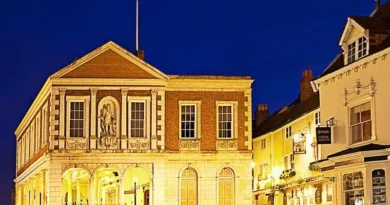
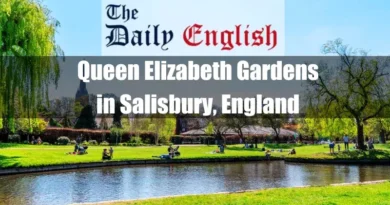
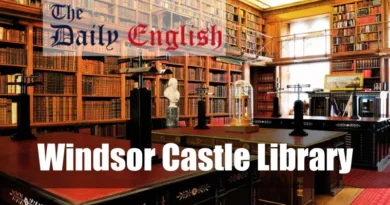
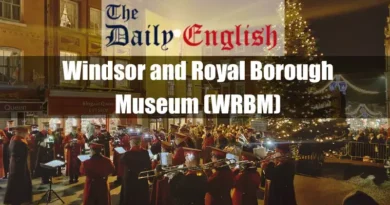
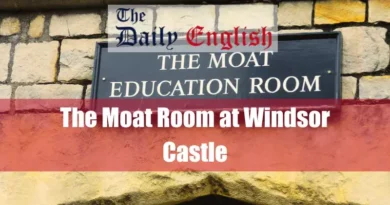
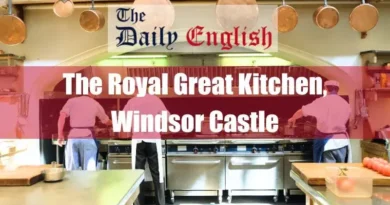
Comments are closed.